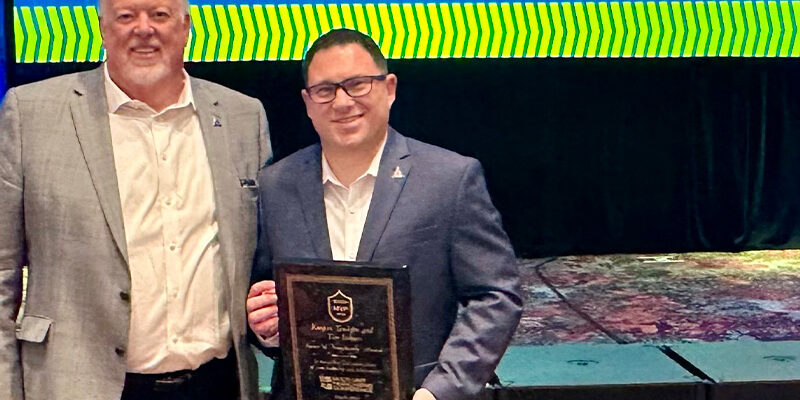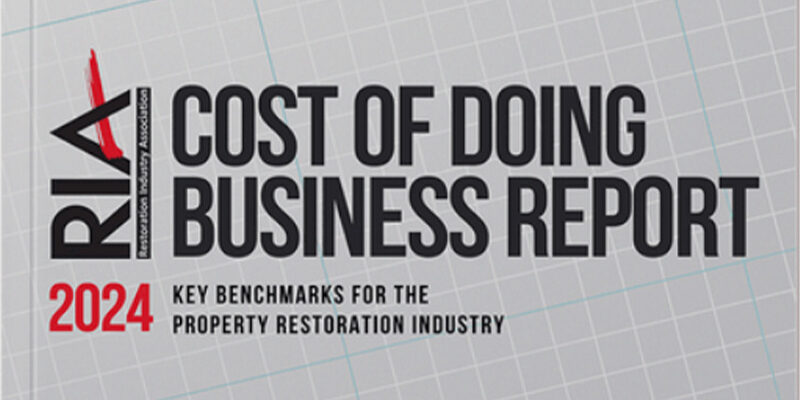6 Tips for Finding Talented Restoration Employees

By Cliff Cole and Ken Kahtava
Finding new talent is hard. In fact, 65 percent of recruiters believe the biggest challenge they face in their career is a lack of talented individuals looking for work, according to Employment Background Investigations.
In the water damage restoration industry, we see this as especially true. We struggle to find restoration employees who have the skills and passion required for success in a challenging industry. We struggle to find team members who are flexible and willing to respond to the round-the-clock needs that come with an emergency services business.
Each time a business says goodbye to an employee or creates a new position to accommodate growth they find themselves sorting through lackluster resumes or struggling to get a single response to their job postings. Generally, good restoration employees (or in any industry, for that matter) are employed, and their current employers try their hardest not to lose them.
1. Employee scouting in the social media age
In the past, employers have relied heavily on job postings on sites like CareerBuilder, Indeed, or Craigslist with a fair amount of success. Although these sites still hold a lot of potential for finding new team members, employee scouting has changed significantly over the last several years.
Social media rules in the world of scouting and hiring. We know that prospective employees are finding out about job openings through social media more than ever before. An estimated 41 percent of social media referrals are coming from job referral sites like LinkedIn, and social media sites like Facebook are grabbing 43 percent of those referrals, according to JobVite, a recruiting research and statistics agency. This should influence the scouting and hiring practice of all companies. It’s time to adapt and adopt these new methods for finding talented and loyal restoration employees.
Social media use should already be a part of your company culture. Facebook and Twitter should be used as one way you generate leads for your business through regular postings and engagement with your followers. Now it’s time to get comfortable with social media as part of your employee scouting process. Social media, especially LinkedIn, drives heavy traffic to job listings. When a new position opens up within your company, share that information online. Your next talented employee might already be connected with your business on social media.
2. Using incentives to attract new talent
We know that employee referrals are one of the leading sources of new talent in all industries. Because of this, we suggest that water damage restoration businesses use incentives to attract new talent to their teams.
Make sure your employees know when you are looking for new team members. Communicate exactly what you expect from someone new to your team and then let them know what kind of reward they can expect for finding the right person. To encourage new hires that are committed for the long term, consider offering a small incentive upon hire and then another, larger incentive, after the new hire sticks with the job for over six months.
3. Remain in the scouting mindset
In a world driven by life lived online, we’ve lost track of just how valuable person-to-person interactions are for networking. We may do a lot of networking online, and social media is certainly valuable to finding new restoration employees, but that should never negate the power of in-person networking.
In fact, we recommend that all restoration employers stay in the scouting mindset. Keep an eye out for exceptional talent as you are out and about in your community. Get to know the people who work at, or visit, the same stores and gas stations you do. Get friendly with employees where you have your car serviced. Keep your eyes peeled for potential team members in the parents of your kids’ friends or the members of your place of worship. Even when you’re not hiring, these relationships should be cultivated as they could become your first resource when a position opens up in the future.
We love the opportunities casual networking provides, but we also value formal networking opportunities. Don’t make the mistake of only attending networking events within your community when you’re desperate for staff. Stay in the scouting mindset all year, attending luncheons at your chamber of commerce, attending town hall meetings, and volunteering at local organizations as your schedule allows.
Of course, don’t forget the power of delegation! When your schedule is too packed, send another qualified employee to the events in your place as a representative for the company.
4. Make a good impression
Too often employers assume that what they have to offer to new hires is so valuable that they don’t concern themselves with making a first impression. This mindset is a big mistake. This generation of workers care more about the fulfillment they will find in their job than ever before. We know that today’s job hunters are reading online reviews of companies before they apply, avoiding those with reputations that aren’t in line with their own convictions, and willing to hunt a little longer to find a workplace that’s a good fit.
Work hard to make a good impression on interviewees. Make sure they know what sets your company apart from others, what kind of benefits will come with their new job, and the potential for growth that will come with their employment. Interviewees work hard to put their best foot forward during the hiring process, your company should do the same.
5. Avoiding hiring mistakes
Hiring a new employee is expensive — about $25,000 per new hire according to a research study done by ZaneBenefits. For a small business, every dollar spent matters, which means it is important that employers are making smart hiring decisions before investing their time and money into a new hire.
Unfortunately, many employers make the same mistakes time and time again when hiring new talent. We believe that systems for scouting and hiring are the key to avoiding these mistakes.
We cannot stress enough the importance of creating a system for the entire process, outlining each step your company must follow during the hiring process. Plan to use the same job boards, the same social media strategy that has worked in the past, and a plan for how you will spread the word among employees that you are offering a referral incentive. Get it on paper, creating a check-off list you can refer to each time you begin the search for a new employee again.
Next, outline your system for moving forward once resumes start showing up in your inbox. We suggest using hiring systems that include tracking systems for incoming applications, phone interviews, and in-person interviews. Don’t make the mistake of neglecting your new hire homework — calling the referrals and past employers of any potential hire must be a part of your new hire system!
Lastly, don’t make the mistake of neglecting a streamlined and uniformed approach for onboarding new restoration employees. New hire paperwork, orientation, outfitting employees with uniforms and equipment, and initial training should all follow a set standard that is monitored by a check-off list.
6. Moving forward with new hires
Create a work environment where your new hires will thrive. Don’t waste the time and effort you’ve put into finding the right people for your team by neglecting to make smart decisions as you move forward with your new hires.
First, make sure that all new hires are participating in ongoing training. Beyond their orientation and onboarding, new restoration employees should be provided with the opportunity to learn new skills that will diversify their roles in the company and set them up for career success in the future.
Next, make sure you are developing your relationship with your new hire. We know that yearly employee reviews are not beneficial to companies or employees. Instead, we recommend regular check-ins, in person or over email, pointing out growth you are seeing in restoration employees and making suggestions for improvement.
Lastly, make sure new talent knows their voices matters in the company. Give them the opportunity to share their own ideas for improving the business. Allow them the opportunity to step into new responsibilities as their skill set grows and they become more comfortable in their roles in the business.
Cliff Cole is the co-founder of More Floods and has been in the cleaning and restoration industry for more than 30 years.
Ken Kahtava is the director of marketing for More Floods. He provides training and coaching of More Floods systems to companies across North America.
More Floods works with water damage restoration owners as they streamline their operational methods for tasks like finding, hiring, and training new employees. To learn more, visit www.morefloods.com.












